Diseases lower bee productivity, reducing their activities, leading to mass death. Protecting the life of bees, though assigned to the country's veterinarians, but the most important doctors are the beekeepers themselves.
Table of contents
Non-contagious bee diseases
Non-contagious bee diseases - differ from infectious diseases in that the damage they cause to the apiary is much higher. Such diseases cannot be determined by laboratory diagnosis., and the cause is the wrong care.
Pollen toxicosis
Nursing disease of bees, which arises from the consumption of pollen with toxic substances.
Insects weaken, fall to the bottom of the hive and die with convulsive symptoms.. Due to the filling of the intestines with pollen, the belly of the sick and deceased bees is enlarged, and when pressed, a dense brown substance appears.
To prevent the development of the disease and the death of insects, it is necessary to remove the scab from the hives and feed the bees with a syrup of 0.4-0.6 liters per hive for 3-4 days.
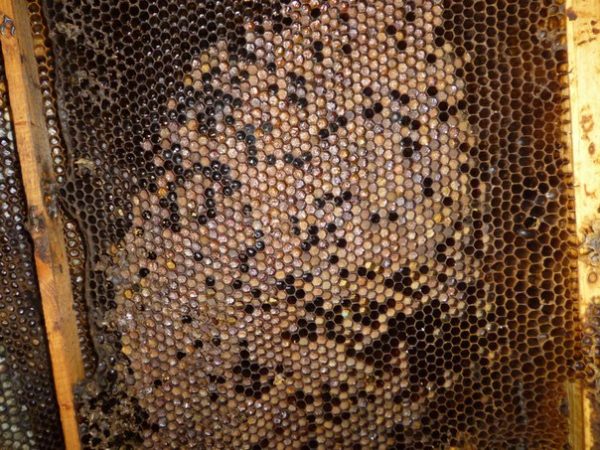
For the prevention of disease you need to organize in areas with honey plants. This will allow filling the non-breezy moments in a certain territory.
Nectar toxicosis
Non-infectious disease of bees, which are caused by toxic pollen and are accompanied by the death of insects. Occurs when picking pollen from the clews, wrestler, Pontic wolfberry, rhododendron and other plantations. Beekeepers determine the disease and death of bees only inside the hive. When infected, the bees initially observed anxiety, then weakening and loss of the ability to fly. Because of this, the wings, abdomen, paws, and antennae are paralyzed.
For treatment use lure 33% syrup. Infected insects are collected, covered in a thin hive in a thin layer and left in a warm place.
For preventionand, in the absence of a bribe, mustard, phacelia and other melliferous plants are planted in the territory.
Chemical toxicosis
Intoxication of bees with toxic substancesthat are used in pest control. This disease appears immediately after spraying the area in the area of the bees. Infected insects crawl through the apiary, in the hives, falling from the walls and honeycombs. There is indigestion, liquid from the mouth, lack of food in the intestines and goiter.
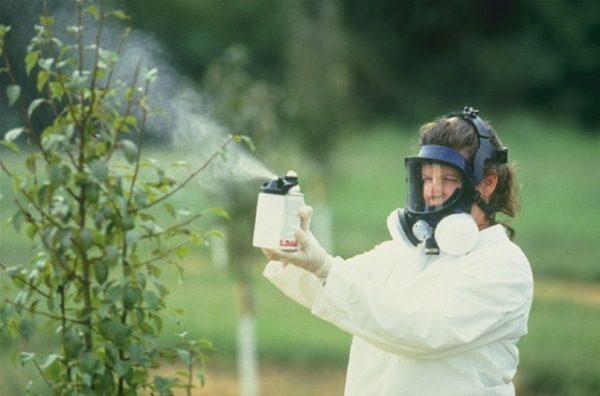
In such cases, honeycombs are taken from the hive and processed into wax.. Sick insects are fed 3-4 days with syrup.
For prophylaxis diseases of bees, during the processing of fields and gardens, are taken out for 5 km and left in a cool place.
Alimentary dystrophy or fasting
Metabolic disorders due to lack of feed. This ends with the death of the brood and the bees themselves. On examination, one should pay attention to the young of a small size - their belly and wings are poorly developed. From such bees should get rid immediately after identifying the problem, bringing them out of the apiary.
In the treatment of, insects provide food - sugar syrup, honey and more. It is necessary to follow the rules of hygiene at work, the health of the swarm and the preservation of the entire apiary depend on it.
Steaming bees
The death of mature bees and brood due to the increase in temperature and moisture. The disease occurs during the excitation of insects that are in a closed hive, poor ventilation and crowding during transportation.
Having become infected, insects make a rumble, the walls of the hive and the ceiling boards get very hot. Looking around the family, they find many dead or dying bees and dangling honeycombs.
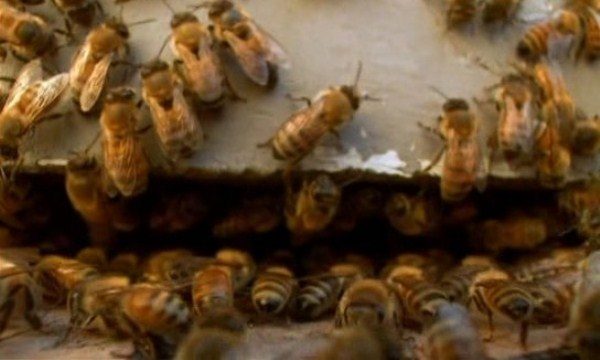
The treatment consists in quickly opening the hive to give the bees a free flight.. The bottom of the box should be cleared of the pestilence and pieces of honeycombs.
For prophylaxis steaming, in families leave the necessary amount of sealed, leave more space inside and prevent direct sunlight.
Fallen toxicosis of bees
Bee disease when eating honeydew honey and ending death of insects and brood.
With the occurrence of this disease dark brown spots appear on the honeycombs and the walls of the hive - bee excrement.
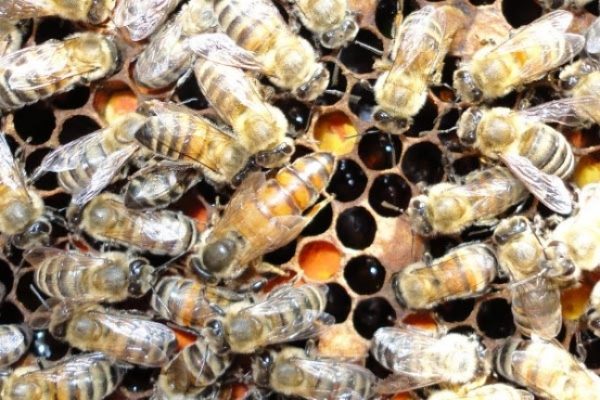
For treatment in the summer, apply lure from sugar syrup 1-1,5 l, and in the winter - honey from raznotravya, or refined sugar, slightly soaked in water; hives are exposed much earlier - for a cleansing fly-around and providing high-quality food for insects.
For prophylaxis, in the absence of a bribe, sow the area around the bees by honey-bearing vegetation or take out the hive to the zone of abundant plantings.
Infectious diseases of bees and their signs
Bee infections - a list of diseases caused by pathogenic microbes, viruses and fungi of plant origin. The main symptom of an infectious disease - sick bee families infect healthy ones.
Axospherosis
Disease caused by ascopher fungusa, affects the drone larvae and bees of 4-5 days of age.
With the disease mummified carcasses appearThey look like fragments of chalk or lime. Mature insects are not infected with this disease, but are its carriers.
Medicines are used for the treatment, as well as feeding with syrup with the addition of 10 ml of 5% iodine per liter of liquid.
For preventive measures:
- keep the hive on the sun;
- remove affected cells;
- do not give downloaded honey;
- spend disinfection with 10% hydrogen peroxide and formic acid;
- burn melted honeycombs and mor.
Aspirgelles
Infectious disease of larvae and mature beeswhich leads to drying out and death. The fungus of this disease is introduced into the hive by bees with pollen.
With the defeat of the virus, the lost brood shrivels and hardens. The color fades and changes to yellow, becoming covered with black and white bloom. Initially, insects are excited, after - lose strength, and the abdomen hardens.
In the treatment using drugs, remove the whole pore and treat the hive with 10% hydrogen peroxide and 0.5% boric acid. Bees give lure.
For prophylaxis insects are kept in dry hives provided with adequate food. The earth under the beehives is dug up with lime, processing with 4% formaldehyde solution. All robots are held in the evening, in calm weather.
Paratyphoid
Serious infection of bee colonies by a number of bacteria. One of which is alveya. The disease is transmitted from infected bees to healthy ones.
With the defeat of microbes, the stomach first suffers. This can be identified by drawing attention to the bee excrement. They are made fetid and semi-fluid.
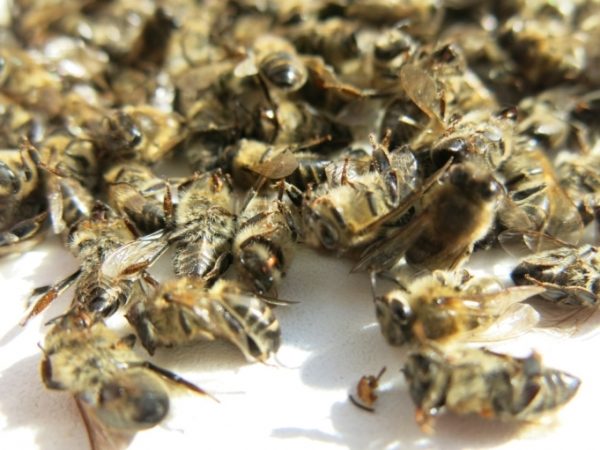
Sick bees are fed with a special medical food.. This requires an aqueous composition containing 100 thousand units of biomycin or 0.2 g of chloramphenicol. It is necessary to combine 40-50 ml of solution with a liter of heated syrup. Feed give 3-4 times a day. After 5 days you should take a break.
For prophylaxis I process the hive with 10% hydrogen peroxide and boric acid. All the pestilence and peeled frames burn.
Viral paralysis in bees
Pathology affecting the nervous system of insects and paralyzing the entire body. The disease is transmitted from infected insects to healthy ones. Microbial transporter - parasitic mite, which settles on the body of bees.
First signs of infection appear on the 5 - 10th day after infection. Bees lose their strength, which leads to death. The duration of paralysis ranges from 7 days to 3 months.
The main thing to isolate a weakened family, to prevent infection of the rest. The treatment is as follows: the quarantine for 1 year is declared at the apiary, the bee sea and honeycombs with frames are burned.
To prevent infection, in early summer, the bees are fed with sugar syrup, with biomycin and tetracycline. In early spring - bacterial endonuclease combined with 1 g of magnesium chloride. This mixture is treated cell 4 times every 7 days.
Septicimia
An infectious disease that infects mature bees. The infection spreads over a couple of hours., which leads to the death of insects.
Infected bees are first excited, then wither, move slowly, and then freeze. When a bee is compressed, it crumbles.
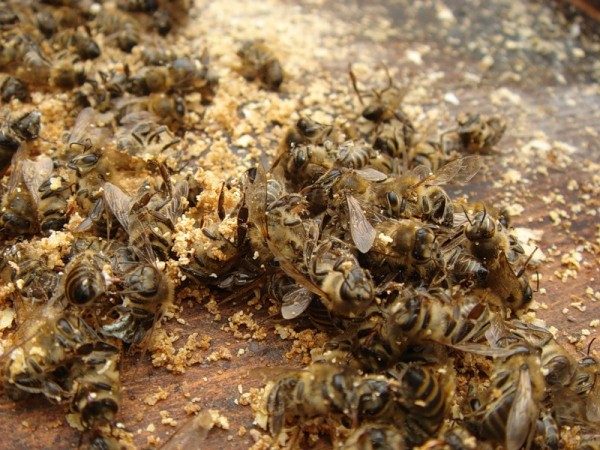
Treatment of septicymia bees are relocated to treated dry hives, frames with unprintable honey are removed. Boxes are insulated. Bees are fed 1: 1 medicinal syrup of sugar and water.
Before the start of the season, the hives must be treated with formic acid and hydrogen peroxide.
European foulbrood
Infectious disease of open and printed brood. The source of the disease are already infected bees. After infection, insects become lethargic, and then die.
Treatment produce, combining with the distillation of families. For food use sherbet mixed with different antibiotics, 2-3 times a day.
Infected cells are disposed of, and the hive disinfected.
Infectious diseases and treatment methods
Contagious diseases transmitted by transfer from various apiaries to infected tools and boxes, as well as the purchase of infected queens.
Varroatosis
Contagious quarantine disease caused by Varroa Jacobson tick.
In winter, infected bees are hectic and need a lot of complementary foods. You can see the pest using white paperon which pests are showered.
Methods of treatment for varroatosis:
- chemical - this is the treatment of bee families with special preparations;
- thermal method recommended in the autumn after the release of brood.
Prevention of varroatosis:
- antivarostatic treatment in early spring, after the exhibition hives into place;
- evening processing families against varroatosis.
Browles
Disease in which bee colonies are affected by lice. Louse is a pest for bees and broods. She lives on their body, especially on the body of the uterus, while greatly disturbing them.
Use tobacco smoke for treatment.. Lice from the body of the uterus should be eliminated using tobacco smoke, and it is recommended to put 6-10 g of naphthalene on top of the frame at night, and cover the bottom with white paper. In the morning all the lice will be visible.
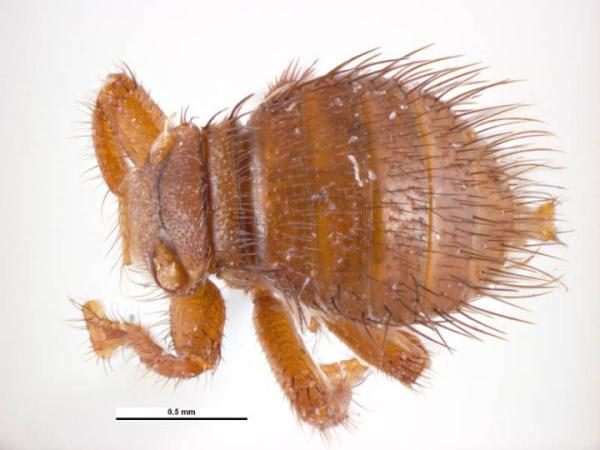
For prophylaxis Hives are processed annually before the exhibition.
Nose beeze
Disease of bee colonies, caused by a unicellular pest - nozomem. The path of infection - alimentary. Insects have diarrhea and mass death during the wintering period.
Treatment carried out with the help of 20.0 g of fumagillin diluted in 25 liters of pre-heated sugar syrup. The course of treatment is 3 weeks.
For the prevention of Nosema strong families are selected for wintering, with lots of young stock.Medicinal products are prohibited, as top dressing is poorly implemented and the drug loses its properties.
Amebiasis of bees
Invasive disease resulting from parasitic amoeba Malpighamoeba mellifica. Parasites enter the body of the bee with the help of food or water.
On examination, the bees become lethargic, have diarrhea and increased mortality.
Treatment carried out with the help of 20.0 g of fumagillin diluted in 25 liters of pre-heated sugar syrup. The course of treatment is 3 weeks.
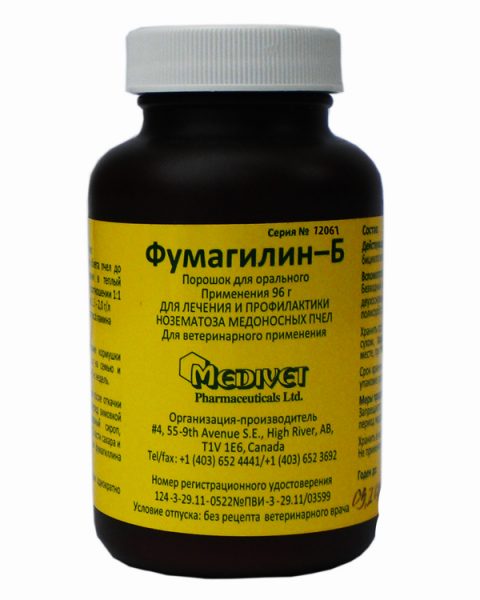
For the prevention of Nosema strong families are selected for wintering, with lots of young stock. Medicinal products are prohibited, as top dressing is poorly implemented and the drug loses its properties.
Acarapidosis bee
Tick-borne lesion of bee families by the parasite Acarapis Woodi.
Pronounced signs of infection can be seen in early spring during the initial departure of the bees. Infected insects die, fall to the ground, pile up or crawl slowly.
In the treatment of use smoke medications. Smoke is best done early in the morning, when the bees have not yet flown.
For prophylaxis in the apiary, quarantine is announced within a radius of 5-7 km. Quarantine is removed one year after the complete eradication of the disease.
Diseases of bees, cause significant losses to beekeepers, so every beekeeper must know the main pathologies that can harm his “wards”.
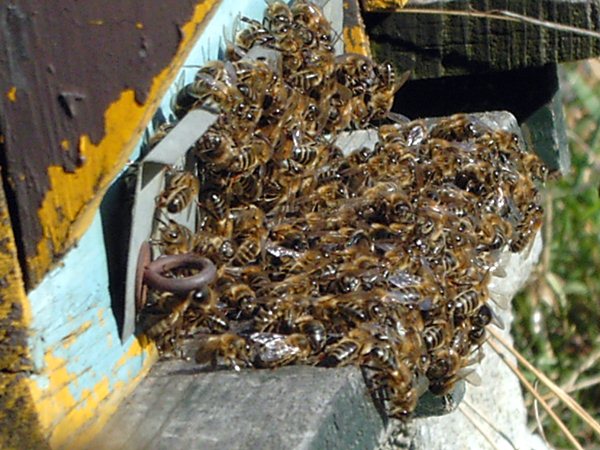
My husband and I have been engaged in bees for several years. Caring for bees takes a lot of time and even more time is needed to monitor their activity. Then the bee wolf will arrive, then the neighbor swarm, then something else. Diseases are a separate topic. Ticks were repeatedly found, watched the families in order not to miss a possible infection. It turned out to notice the onset of the disease is not always, but here it is very important not to miss the moment, since the development of the pathological process is rather hastily.